Teaching color theory the same way every single year can get boring. Color wheels are often the “go-to” for teaching color theory since they require students to mix colors and show color relationships. We have the antidote to color wheel boredom if you’re looking for a new approach! Say hello to a rainbow of creative and engaging activities that will have your students begging for more. Get ready to paint the town red (and every other color in the spectrum) with these fun and innovative ways to spruce up the color wheel.
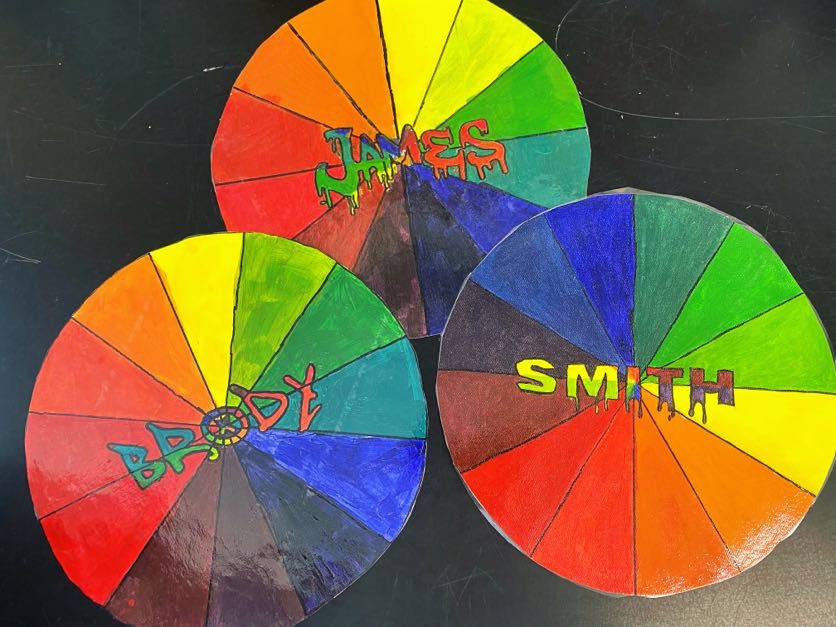
For more information on how to break down color theory for your students with experimentation and fun games, check out the Color Theory Basics Pack in PRO Learning. Take your students beyond color theory and get them to apply their newfound knowledge. For detailed lessons with step-by-step instructions aligned to standards, download the Applied Color Theory Collection in FLEX Curriculum.
Foundations of the Color Wheel
Before we go over engaging color wheel projects, let’s dig into why we should teach the color wheel. The history of the color wheel is a long and fascinating one, tracing back to ancient times. Here are some of the brief highlights. The Renaissance saw the first formal color theory with Aron Sigfrid Forsius, who created one of the earliest color diagrams in the early 1600s. Later, Sir Isaac Newton discovered a scientific approach to color using light and a prism. The color wheel is more than a modern, mandatory foundational art activity. It’s steeped in history, science, and tradition!
Even though color wheels have historical and scientific significance, there are many reasons to spend time on them in the art room. Let’s take a look:
- Shows color theory in action and gives a visual representation of color relationships.
- Reinforces measuring, math, and geometry concepts and skills.
- Integrates other subjects like science, marketing, and psychology.
- Requires minimal art supplies.
- Allows students to practice color mixing.
- Develops vocabulary to communicate about color.
Keep reading for 12 ways to reinvent the color wheel in your curriculum!
We compiled your top ideas for introducing the color wheel in new and creative ways. Adapt the ideas below for multiple grade or ability levels. You can also try a combination of ideas and see what works best for your students.
1. Color Wheel Disco Ball
Sari Shryack is an oil painter who specializes in creating images of disco balls. Look at her amazing disco art and analyze how she uses color, line, and shape to create her work. Then, have students compose their own disco ball and incorporate color mixing, including tints and shades, into their design.
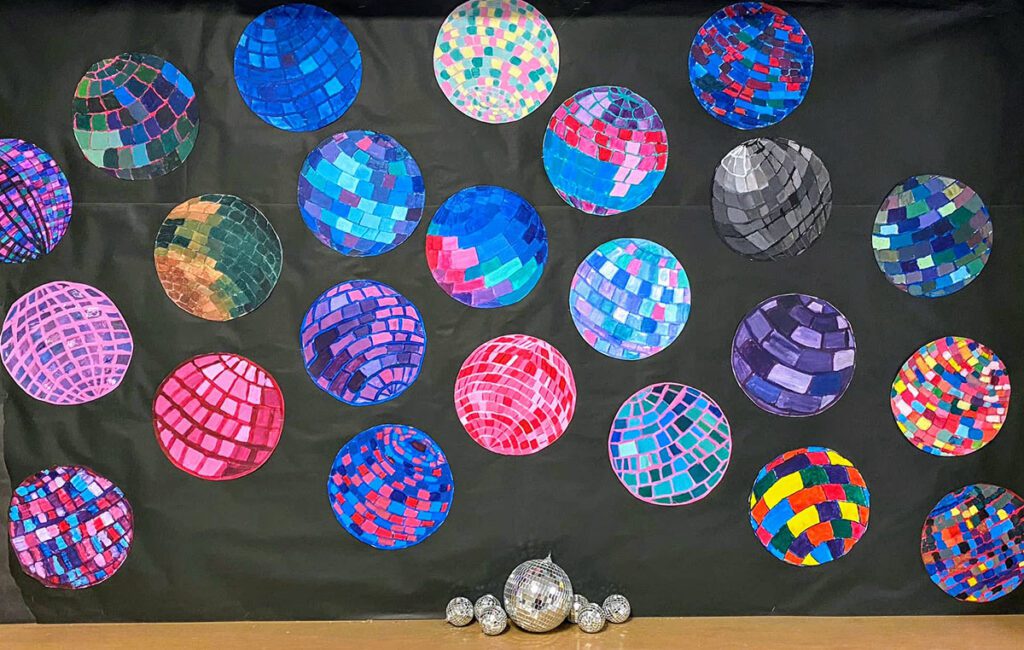
2. Color Wheel 2.0
Ramp up your existing traditional color wheel project by adding a fun twist or complexity requirement. Or, have students select from provided options to incorporate more choices.
Here are some ways to take color wheels to the next level:
- Choose a theme to reflect in the design’s symbols and imagery. Popular themes are food, names, TV shows, video games, and animals.
- Paint with a CMY or RBY color palette.
- Collage bleeding tissue paper in lieu of paint.
- Design an eye with a color wheel for the iris.
- Add a radial mandala design on top with permanent markers.
- Compose a graffiti name in complementary colors on top.
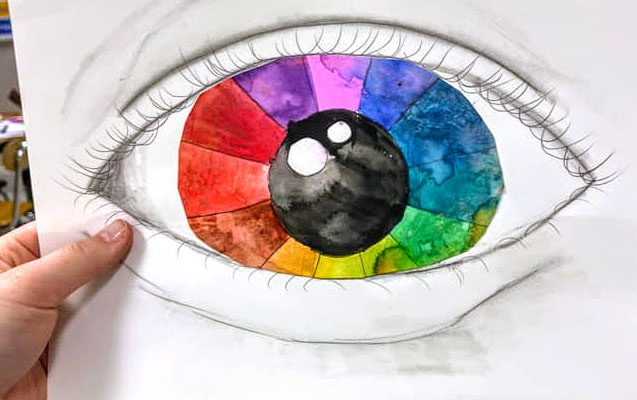
3. Rainbow Snack Time
Mix food coloring with white frosting to create an edible color wheel. Students can frost cookies or cupcakes. For a group project, students collaborate to make a color wheel cake! Whenever bringing food into the art room, adhere to your district and school’s food and allergy guidelines.
4. Color Mixing Lab
Set up a lab where students experiment with mixing primary colors to create secondary and tertiary colors. Formally record findings in a lab report. This is a great opportunity to incorporate science and technology in the studio!
5. Color Wheel Dioramas
Have students create a miniature scene that reflects their interests and includes all 12 colors of the color wheel. Students will have a ball collecting items for their tiny dioramas and mixing the colors they need to paint their diorama items. Take it a step further and prompt students to consider how the placement of their colored items represents color relationships.
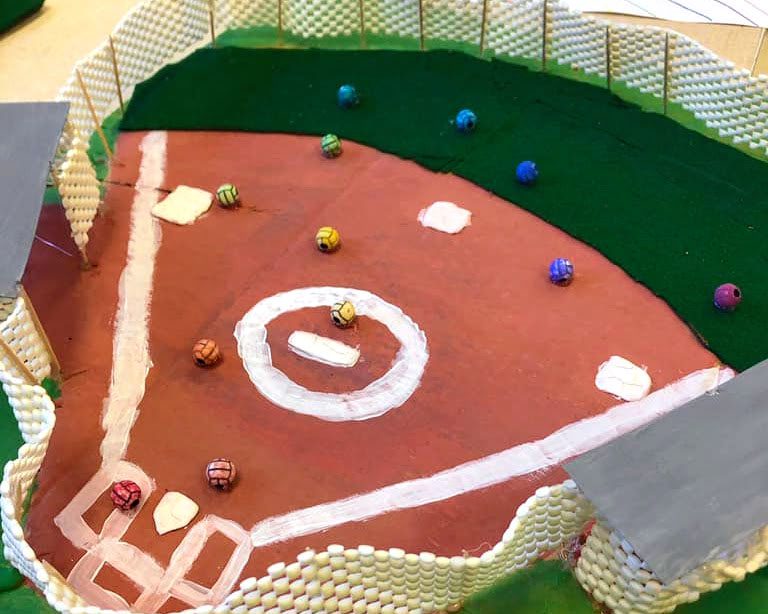
6. Clay Color Wheels
Did you know you can color white air-dry clay or modeling compound with markers or watercolor paints? Students take three large balls of clay and mix one primary color into each. Divide the balls into smaller sections and mix the colors together to make secondary and tertiary colors. Sculpt into small figurines or roll into a slab and add texture. Punch holes into each and thread string to create a mobile, windchime, wall hanging, or piece of jewelry.
If you have a kiln, create a similar ceramic piece. In lieu of adding color with markers or watercolors, experiment with the correct mixtures of primary colored underglaze to get the secondary and tertiary colors.
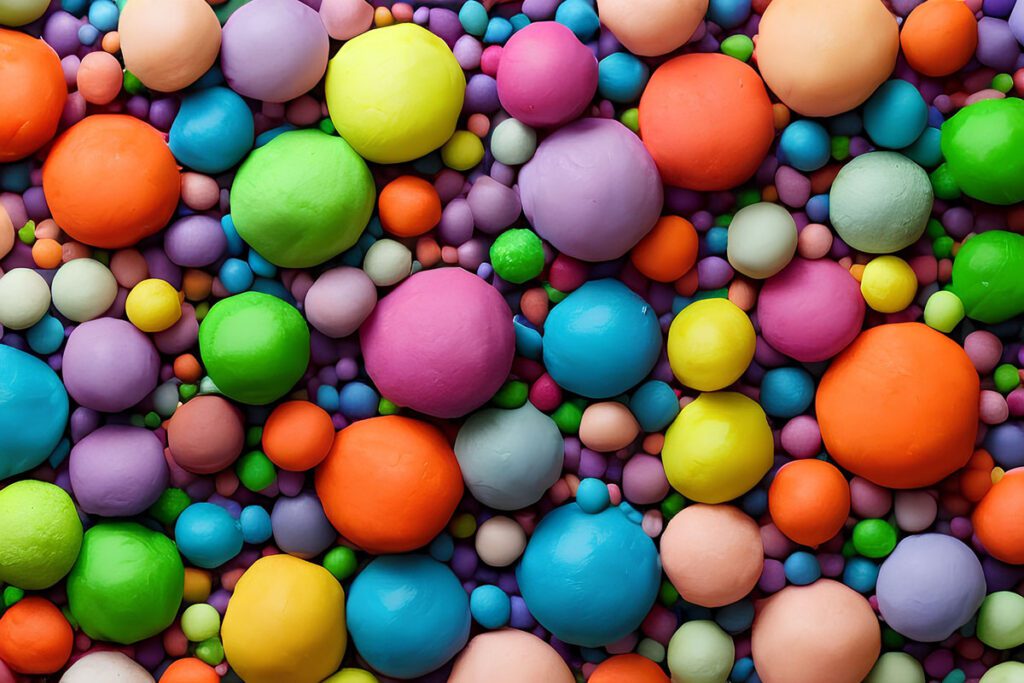
7. Color Wheel Fashion Designs
Design outfits or accessories to showcase different color schemes from the color wheel. Color schemes can include primary, secondary, tertiary, warm, cool, triadic, complementary, split complementary, and analogous. Students mix watercolors to practice their color mixing and add color to their fashion sketches. If you have the time and resources, bring student designs to life with a wearable art unit and host a fashion show.
8. Patterned Animal Color Wheel
Cows, zebras, cheetahs, tigers, lizards, snakes, birds, and more—from spots to stripes, all of these animals have patterns. Why not make these animals into beautiful color wheel creatures? Simplify and stylize the patterns and transfer them onto a traditional color wheel. Create contrast so the design stands out by using tints and shades or complementary colors.
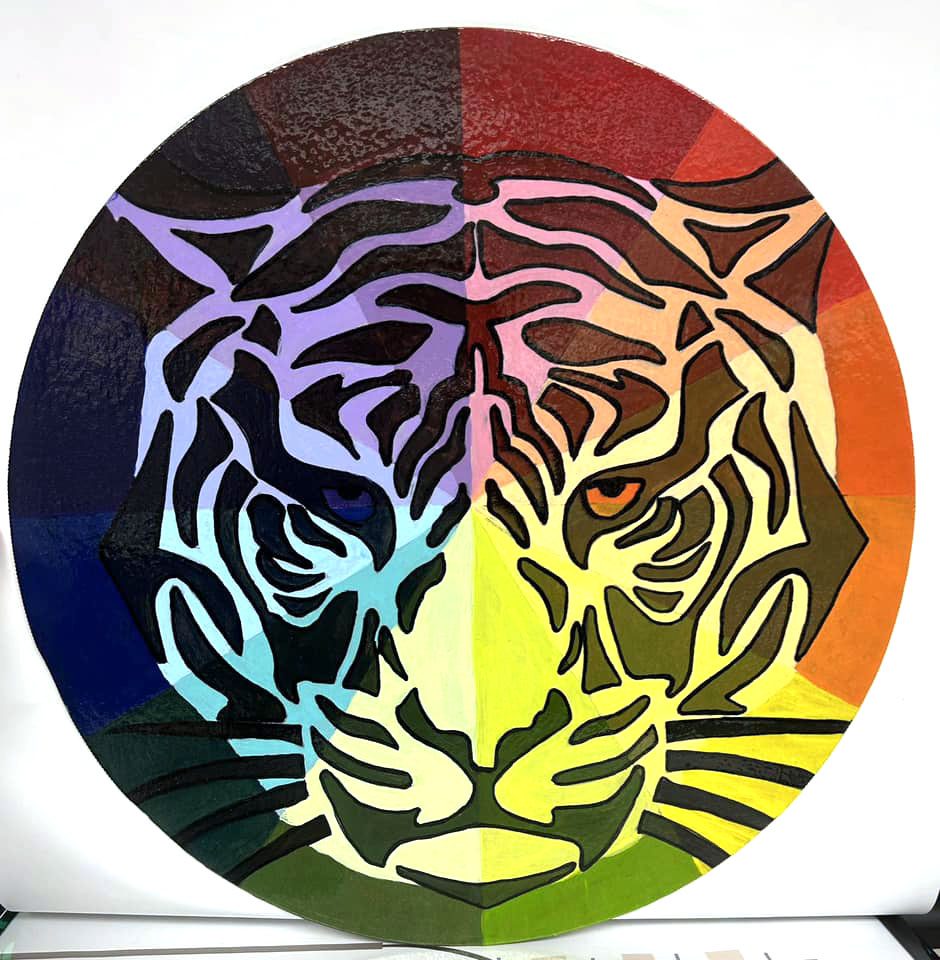
9. Color Wheel Landscape
Discuss space with backgrounds, midgrounds, and foregrounds, and paint a landscape. Students incorporate all 12 color wheel colors, practice blending skills, and demonstrate color theory with color placement. Add another facet with atmospheric perspective where students mix tints and shades to create depth.
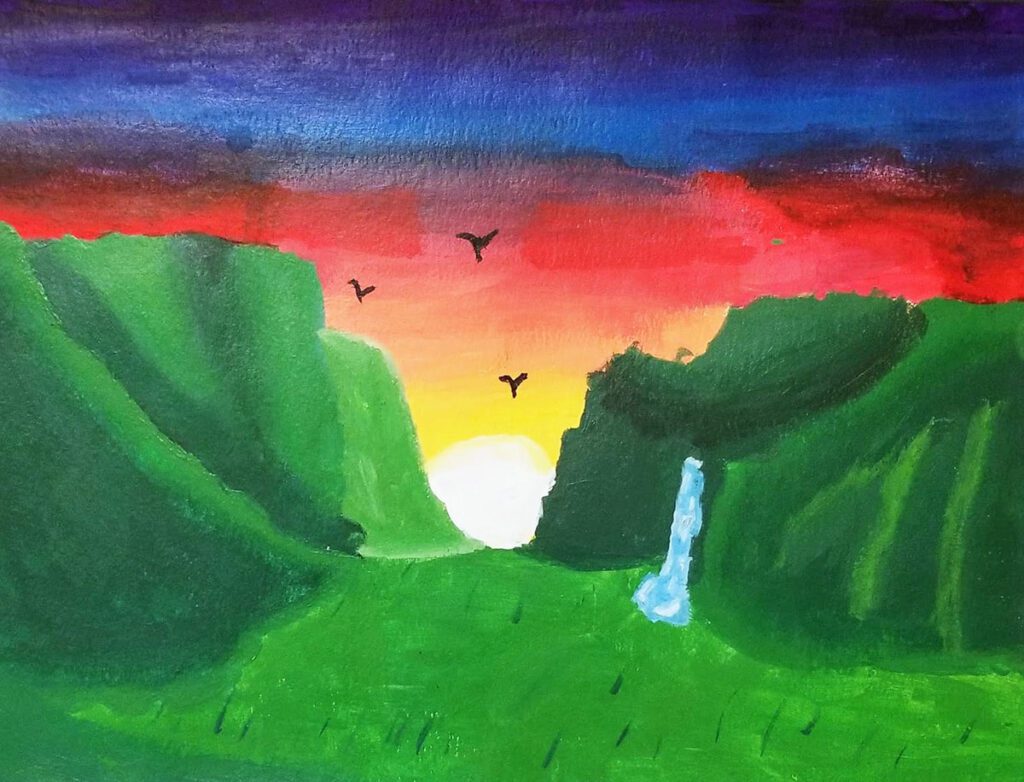
10. Color Wheel Games and Puzzles
Host a game day where students fuse play with color mixing! Take a brain break and play Hues and Cues or Color Wheel. To learn how to create your own color-mixing game, check out this article. Consider gathering puzzles from your local thrift store and spray-painting them white. Students select 12 pieces that fit together. Mix the 12 colors of the color wheel and paint the blank puzzle pieces. Permanently adhere them together to create a bookmark, keychain, or other creation!

11. Tie-Dye Color Wheel
Provide students with white t-shirts, bandanas, or other fabric. Students tie-dye the fabric using only the primary colors. Watch with wonder as the colors bleed together to make secondary and tertiary colors!
For more resources on how to get started with tie-dye, check out the Tie-Dye Techniques Pack in PRO Learning or the following articles:
- A Step-by-Step Guide to Tie-Dye in the Classroom
- Tie-Dye in the Classroom at a Glance
- 6 Exciting Tie-Dye Techniques to Try This Summer
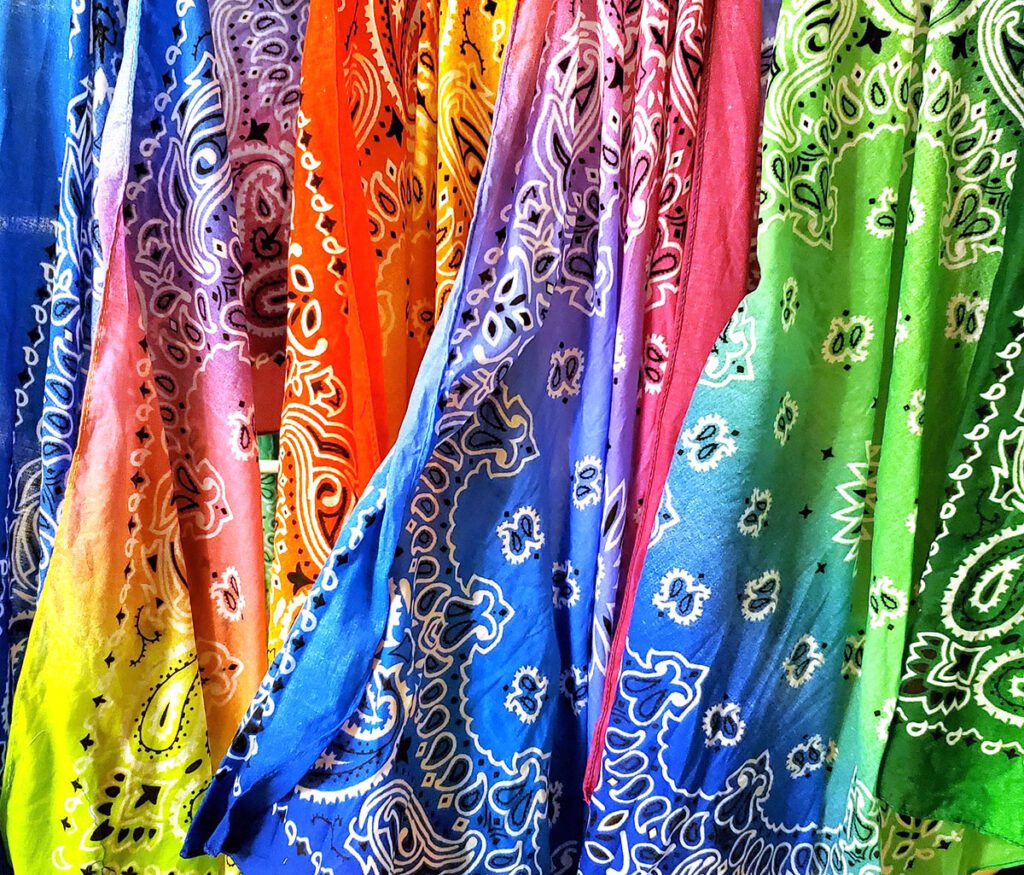
12. Blooming Color Wheel
If you have the budget, purchase some white roses or carnations. Students mix primary-colored dyes to make secondary and tertiary colors. Stick the flowers into the dye and watch the science of osmosis! When the flowers are dyed, press them to use for collages or place them in a still life. You can also gift them to other teachers to show appreciation!
For a more budget-friendly version, use primary-colored watercolors to dye white coffee filters. Scrunch, fold, or cut them into elaborate flowers to make a colorful display!
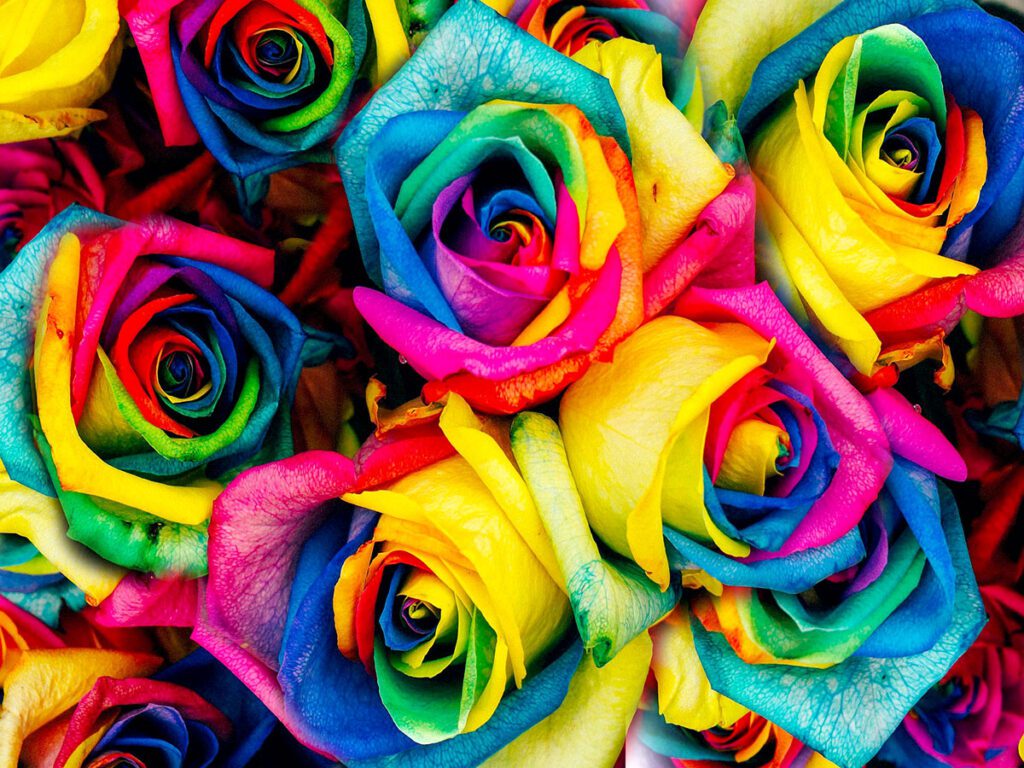
Teaching the color wheel doesn’t have to be a snooze-fest. Infuse creativity, fun, and exploration to engage your students in a colorful world of learning. Let’s say goodbye to those old, dusty color wheels and hello to vibrant, exciting ways to demonstrate color theory! Whether you’re painting a masterpiece, designing a website, or just choosing what to wear, understanding the color wheel is an essential skill with many life applications. Go forth and show your students how to color their world with creativity and enthusiasm!
What new ways will you use to introduce the color wheel to your students this year?
Do your students love or hate making color wheels?
Magazine articles and podcasts are opinions of professional education contributors and do not necessarily represent the position of the Art of Education University (AOEU) or its academic offerings. Contributors use terms in the way they are most often talked about in the scope of their educational experiences.




